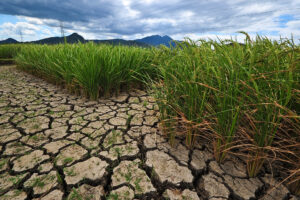Nature Monitoring: FINALLY, a Solution to the Tragedy of the Commons!?
We cannot address the climate crisis without looking at the biodiversity crisis. Over half of the global GDP is dependent upon functioning ecosystems, while nature loss is predicted to reduce the global economy by 2.7 trillion by 2030.
Aside from the huge impact on the economy and businesses, I don’t believe anyone wants to live in a world without wild animals, clean water, flowering plants and a diverse range of fruits and vegetables. I certainly don’t want to be the generation responsible for mornings without bird song. All these losses may seem dramatic – but that is what is at stake.
Tragedy of the Commons
So how does this all relate to innovation? Let’s start with the tragedy of the commons – this is a concept where if people are given unfettered access to a valuable but finite resource, it will be overexploited and may end up getting destroyed all together. We can certainly observe this with nature – with a lot of nuances.
Within this concept, technology can monitor how much and who is exploiting that resource. Technology and new business models can also improve the economics of restoration, where exploitation is less valuable than restoring nature.
Cleantech Group has monitored an uptick in early-stage investment into innovators who are providing nature monitoring services to companies to enable them to quantify and understand their total impact, dependencies, opportunities, and risk exposure to nature-related risks.
Reporting and Disclosures
The primary driver for corporate biodiversity monitoring is oncoming reporting requirements. Starting in 2024, EU ESRS regulations will force large companies in EU member states to disclose quantitative metrics and targets on their biodiversity and ecosystems impact, dependencies, risks, and opportunities.
Corporates have made voluntary commitments to reduce their impact on nature, although less than 20% of S&P 500 companies have made biodiversity commitments so far. Compounding nature-related risks are driving investors to demand companies map their nature dependencies, risks, impact, and opportunities, e.g., the Taskforce on Nature-related Financial Disclosures (TNFD) Framework.
Funding Regeneration
Another key driver for biodiversity monitoring is as an enabler for quantifying ecosystem services (e.g., pollination by bees or population control of grazers by apex predators) and making nature an asset class – similar to how carbon offsets have tried to do for emissions.
The biodiversity credit market is in very early stages but poised to grow rapidly with market infrastructure being established by the carbon offset market. An estimated $830B of investment is required annually to bend the curve on nature loss and restore degraded landscapes. Offsets and nature-credits present a promising route to raise some of this investment. Measurement Reporting and Verification (MRV) technologies provide transparency and verification to carbon offset markets or biodiversity credits.
Biodiversity Monitoring Technology
Traditional approaches to biodiversity monitoring are highly manual, slow, costly, and require multiple siloed experts, limited by geography. In early stages, platforms, data analytics, sensors and testing are being stacked to enable companies to better understand and quantify impact, while costing and then tracking regenerative actions, e.g., Nala and Nature Metrics.
Examples of technology include:
- Geospatial monitoring (satellites and drones) and a company’s operational data enable direct monitoring of impact or MRV of nature-based offsets, e.g., Pachama.
- Blockchain validates geospatial data and reduces the incidence of credit/offset double-counting, e.g., CEVEN.
- Computer vision enables conversion into biomass equivalent, e.g., Treeswift.
- Software can estimate a company’s impact and risk exposure using company data, while AI can fill data gaps, e.g., Nature Bound.
- Software enables semi-automated reporting, streamlining reporting processes, e.g., Nala.
- Direct testing or sensors monitor specific locations or monitor one organism as a proxy for overall ecosystem health, e.g., eDNA to monitor the presence of apex predators, e.g., Nature Metrics.
- Innovators are also offering consulting services to help companies navigate new reporting requirements, thus, reducing reporting burdens and educating on nature-related risks and opportunities.
Innovators are seeking to create new markets for monitoring tools with customers benefiting from compliance streamlining and risk reduction, as well as supply chain resilience, resource efficiency, improved reputational capital, and access to new markets, e.g., Pivotal.
The Future for Nature Monitoring
The drivers for nature monitoring are much the same as we observed with emissions monitoring in 2019, which was kicked off by the Task Force on Climate-related Financial Disclosures (TCFD) framework. What began as a voluntary framework has now become part of the regulatory framework for mandatory climate-risk disclosures in the EU, Singapore, UK, South Africa, New Zealand, Canada and Japan.
Many expect this new TNFD framework to follow suit, which should shift nature-monitoring from a voluntary to a mandatory activity for companies. As such, I would expect the innovation ecosystem to follow a similar growth trajectory.
The key difference between markets is the increased complexity in monitoring biodiversity and nature compared to a single metric of carbon emissions. For innovation, the greater the challenge the greater the diversity of solutions — thus, I would expect a vast array of possible solutions from direct monitoring to smart software and AI applications. I also expect considerable consolidation with existing players in the corporate sustainability monitoring space, with consulting or enterprise software incumbents, such as S&P, or emissions monitoring scale-ups, such as Persefoni or Watershed.
A rocky road lies ahead with MANY moving parts from regulation and technology to corporate action and consumer buy-in. Overall, nature monitoring technologies have the power to flip the tragedy of the commons on its head, by preventing making nature regeneration profitable and exploitation bad for business.tr



